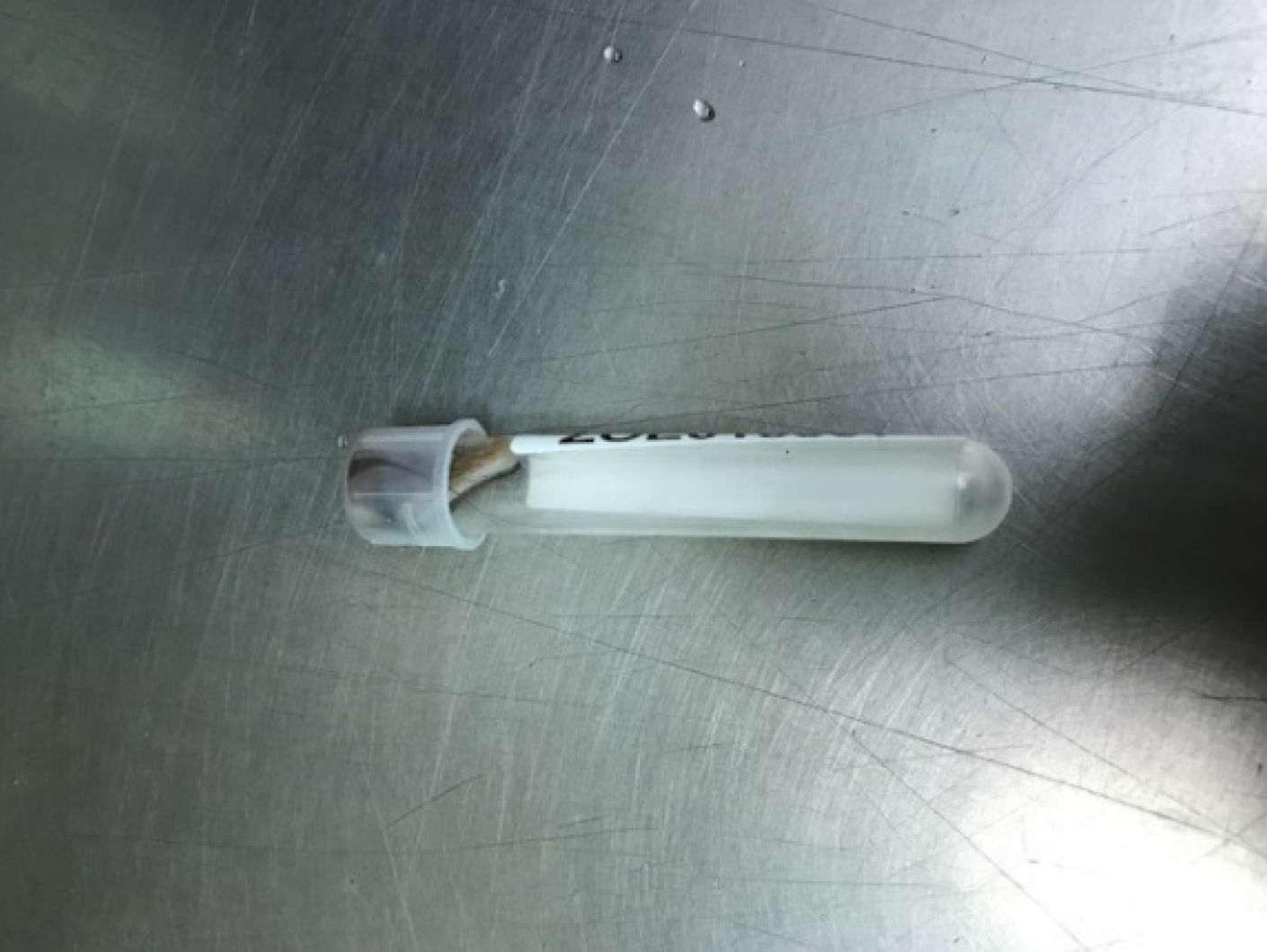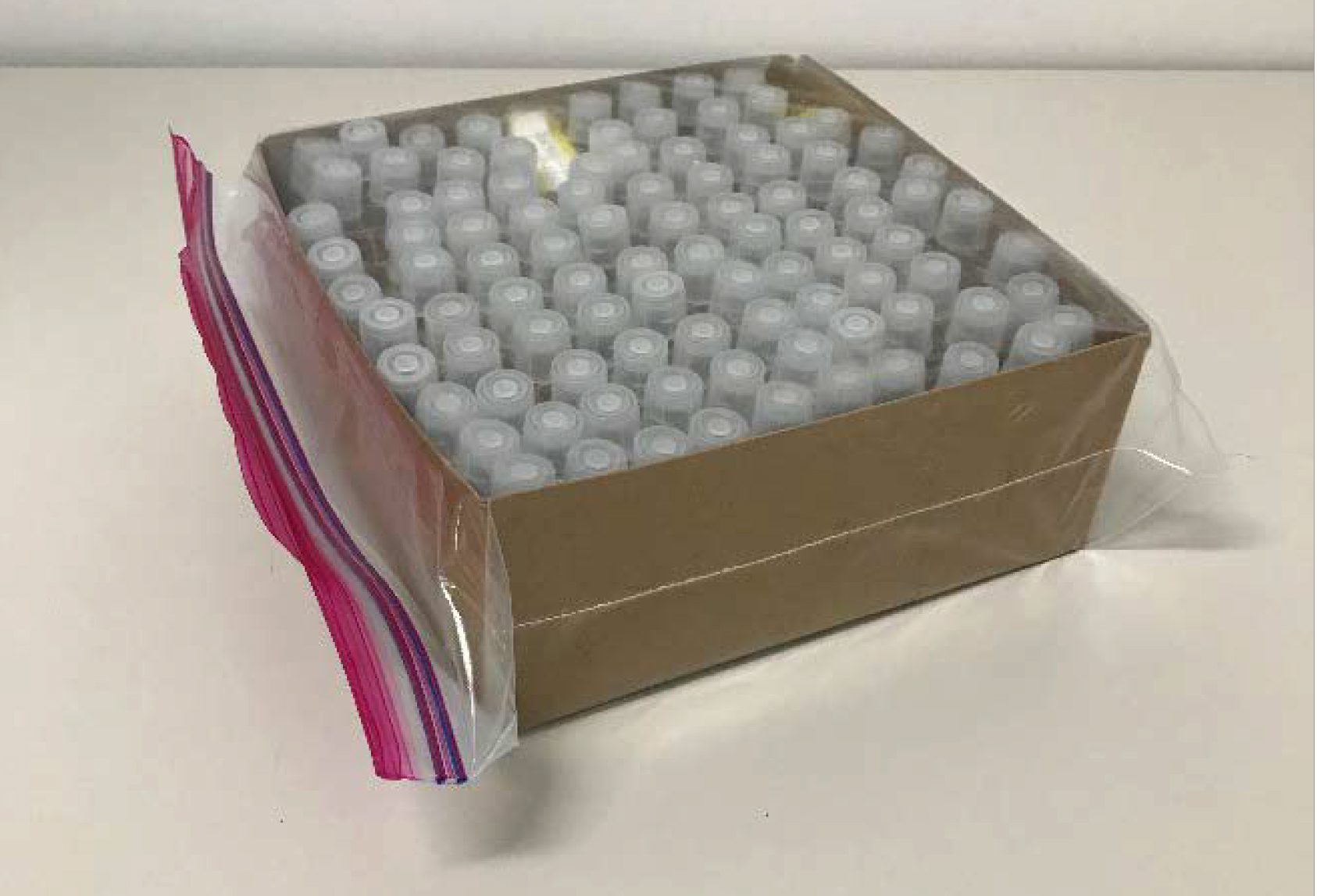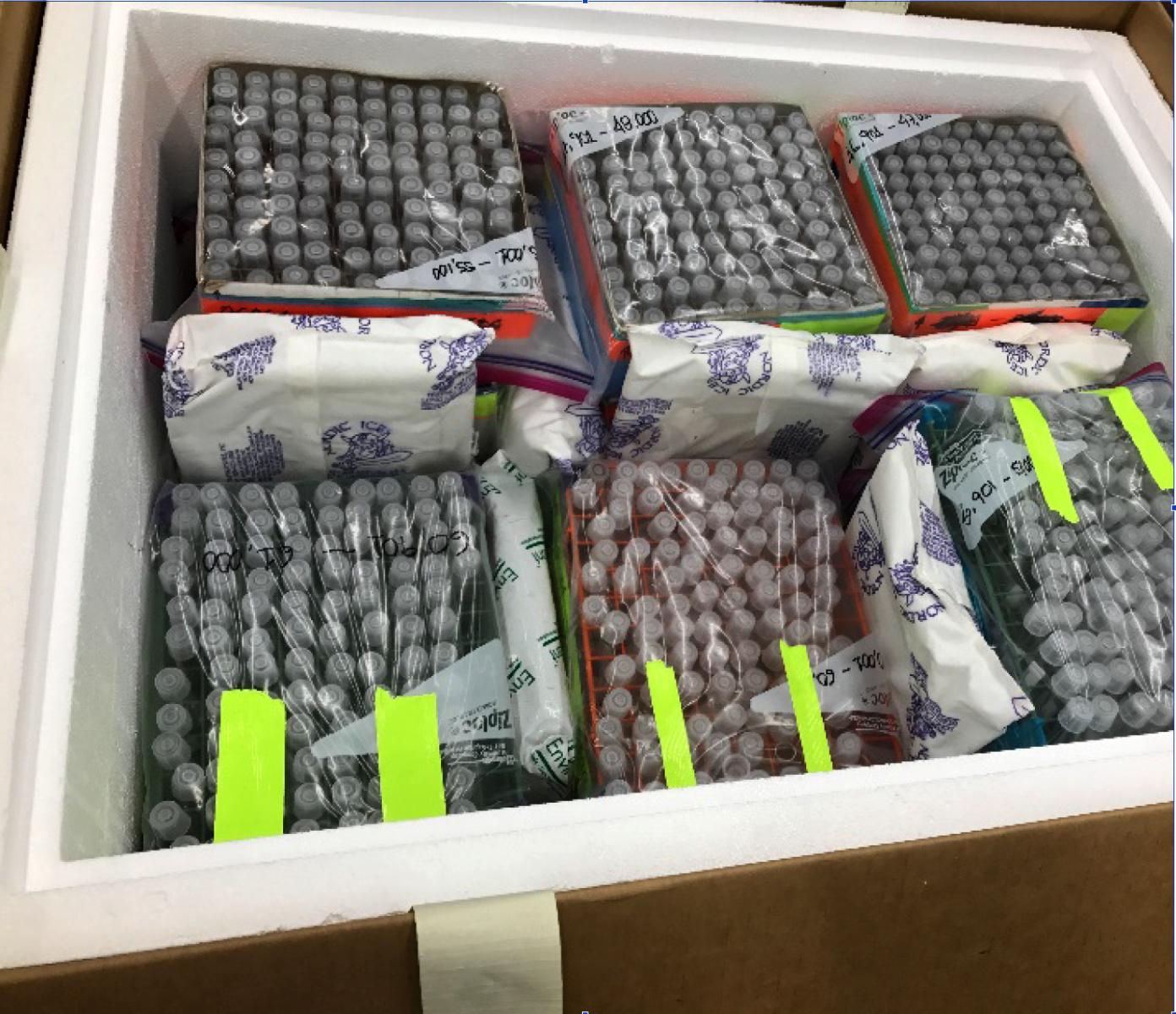BVDV testing
Fee schedule and submission guidelines
Cost and detailed information
| Accession fee |
| One to 240 calves |
| Over 240 calves |
| No charge for retesting previously positive calves (must indicate previous case number) |
If samples are submitted without a referring veterinarian, payment is required at the time of submission. Payment may be made by cash, check or money order only.
Submission information
Skin biopsies from any location on the body are sufficient. The most convenient method is to collect an ear notch. A triangle-shaped notch ranging between ¼ and ½ inch on a side is an adequate size.
Biopsies should be placed in individual (preferably red-topped) tubes (do NOT use Whirl-Paks) with neutral-buffered formalin. (Additional charges may be assessed if the NVDC has to place the ear notches in formalin.) Skin samples should not be held in formalin for more than one week prior to submission to the NVDC. Extended storage in formalin will result in falsely negative tests. The tubes need to be labeled to identify the calf from which the biopsy was collected. Please be sure to fill out the accession form completely, including tube # and animal ID for each ear notch submitted. (Additional charges may be assessed if the paperwork is not filled out properly.) Please allow 5 - 7 working days for emailing results.
We can mail forms or you may download and print the submission form.
The veterinarian and owner information can be entered on the computer and then the form printed for entering calf identification information by hand.
You also may submit large cases with an Excel file by e-mailing the spreadsheet with the animal IDs in the correct order. Please note on the accompanying submission form that you are submitting the animal IDs by e-mail. Please fill out the rest of the submission form including the starting and ending tube numbers.
Neutral-Buffered Formalin (pH 7.0)
Formaldehyde, full strength (37-40% formaldehyde) 100 ml
Sodium phosphate dibasic (anhydrous) (Na2HPO4) 6.5 gr
Sodium phosphate monobasic (NaH2PO4) 4.0 gr
Distilled water 900 ml
You may also use 1 part formalin and 9 parts water.
Instructions for submitting fresh ear notches for BVDV PCR testing

Use a medium-sized ear notch tool that cuts a notch 0.5” wide at the base.
We ask the samples are sent in tubes that are the “snap cap” “friction caps” or “Falcon” tubes that are 12 x 75 mm in size.
These can be purchased from any number of distributors. The tubes do not have to be sterile when you purchase them.
Collect the ear notches and place them dry in the tube. Be sure the tubes are in sequential order in the box corresponding with submitted ID spreadsheets. We encourage you to send electronic spreadsheets for large cases.
Be sure the sample is pushed down to the bottom of the tube before submission to the lab. This can be done by tapping a box of tubes onto a table top 25 times and turning the box 90 degrees and tapping another 25 times. Do this for all four sides of the box. The caps must be off the tubes before tapping.
Keep samples cold or refrigerated to maintain good quality of samples. Ship the samples in insulated boxes with cold packs overnight.
For questions, please contact Dr. Duan Loy (dloy2@unl.edu or vdc2@unl.edu).
Instructions for packaging fresh ear notches for BVDV PCR testing


We ask that the tubes are packaged in 100-tube boxes. We can supply the boxes which we had made for this purpose. Seal the boxes in one gallon Ziploc® bags in order to keep the tubes stable during shipment.
Be sure to have the tubes placed in order according to an Excel spreadsheet with the tube numbers in a single column. The spreadsheet can be emailed to vdc2@unl.edu with the owner’s last name and “ear notch id’s” in the subject line of the email.
Keep samples cold or refrigerated to maintain good quality of the samples. Ship the samples in insulated boxes with cold packs for next day delivery.
For questions, please contact Dr. Duan Loy (dloy2@unl.edu or vdc2@unl.edu).